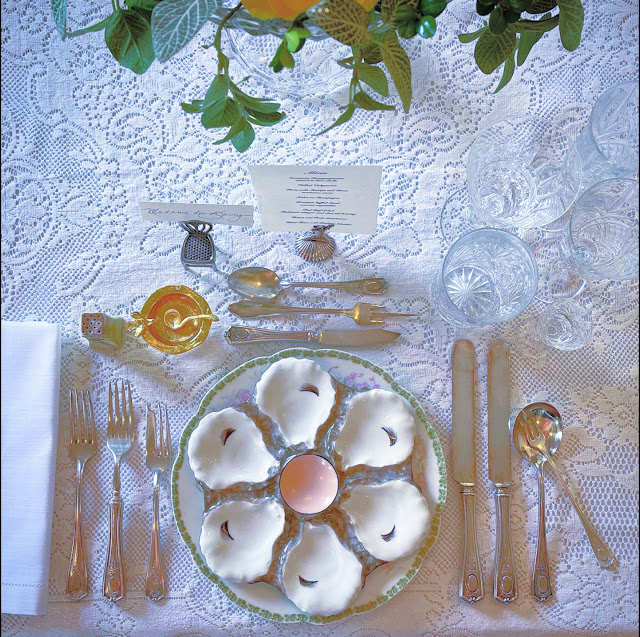Announcing the
Second Annual Etiquipedia
International Place Setting Competition
To begin planning your menu and submitting your setting,
starting on August 1, 2022,
go to
You will need to fill out a form to enter and will then be contacted on how to submit your photos and menu.
Entries will only be accepted up until 11.59 pm PST (California) on September 6, 2022
Best in Show Winners of
Etiquipedia’s Second Annual International Place Setting Competition will Receive:
- A signed copy of Maura J. Graber's upcoming book, “More of What Have We Here?”
- A blog post featuring the winner and their setting on the Etiquipedia Etiquette Encyclopedia.
- Some surprise gifts from the historic, Graber Olive House, in Ontario California.
- A certificate, suitable for framing, congratulating the winner.
- An antique silver utensil, chosen by Maura J. Graber from her personal collection.
Winners in both the
Professional/Etiquette Community
and the
Amateur Community
categories will be notified within 3 weeks of the contest’s end.
A list of the 2022 Place Setting Competition Winners will then be posted on the Etiquipedia Etiquette Encyclopedia
We hope that every adult globally
(adults aged 18 or over!)
who wishes to enter will be able to participate. We wish you all the best of luck!
Elizabeth Soos and Maura J. Graber
If you wish to see the winners and read about their 2021 settings, there are links at the end of this page below.
The contest rules and guidelines:
- Your menu and place setting should reflect at least 5 courses.
- All utensils or flatware, glassware or beverage ware and the porcelain, ceramic, etc… plates and dishes, should be set in readiness for the first course.
- Your place setting should be reflective of the corresponding original menu.
- If the menu is written in another language than English, it needs to be provided in English, as well, for the judging process.
- Your photo's must be original and taken by you, due to copyright laws.
- A selfie of you with your table must be submitted along with your entry photo.
Theme choices are:
- Georgian Era
- Regency Era
- Victorian Era
- American Gilded Age
- Edwardian Era
- Mid—20th C. American Modern
- Table for Two — If you do not wish to create a historic setting, choosing from the eras above, your entry must be a table set for for two, along with your corresponding menu.
See last year’s winners’ settings and read their stories:
Tatyana Gresserova – https://etiquipedia.blogspot.com/2021/08/an-interview-with-tatyana-gresserova.html
Victoria B. Edwards – https://etiquipedia.blogspot.com/2021/08/an-interview-with-victoria-b-edwards.html
🍽Etiquette Enthusiast, Maura J. Graber, is the Site Editor for the Etiquipedia© Etiquette Encyclopedia



















